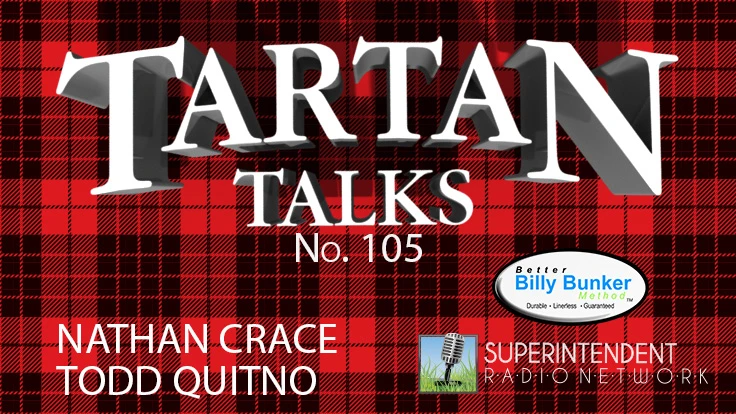For many people, interviewing for a job doesn’t come naturally. Many assistant superintendents, including me, haven’t had the experience selling themselves and drawing attention to their strengths and qualifications. Whether you have the experience or not, having a well-prepared portfolio can be a confidence-builder, distinguish you from other applicants and help you earn a job.
As I prepared for my first interview, I reached out to my friends in the industry who began interviewing for their first superintendent positions. I asked for their advice about many aspects of the process and what they did to stand out. Most of them had prepared a portfolio that was tailored to each specific job interview. There’s no single correct way to prepare one – a different presentation is appropriate for each person, situation and interview.
A portfolio is a show-and-tell resume, a sophisticated scrapbook. It’s the first opportunity you have to market yourself. It’ll indicate your value, portray your experience, serve as a creative asset to intrigue prospective employers and leave a lasting impression. A portfolio can become a large collection of items, but remember to take your cues about what to include from the job advertisement. This is important because your portfolio will demonstrate you have done your homework and understand the characteristics and skills an employer seeks.
There are many advantages to investing in a portfolio. A well-prepared portfolio will distinguish you from candidates who don’t bring one. It shows initiative on your part, suggesting you’re prepared and organized.
A thorough and well-organized portfolio does more than just add appeal and information. It gives you some control over which topics will be discussed during the interview. I’ve found it shifts the meeting from the interviewer to the interviewee. It makes me feel more relaxed and confident, easing me into the more difficult or technical questions. It helps set you apart from the people who simply respond to interviewers’ questions.
Developing a portfolio helps you prepare for interviews by allowing you to think critically about your career experiences and accomplishments. While compiling your portfolio, you’ll rediscover the many accomplishments you might otherwise forget during an interview.
The first step to building a portfolio is to understand the skills a position requires. Focus on including relevant support for the skills outlined in the job posting. To enhance the uniqueness of the portfolio, request a visit or tour of the facility so you can tailor what you include in your presentation to what you saw on the course and at the maintenance facility.
Draft a table of contents to guide you to narrow the scope of the documents. Most portfolios include a table of contents, resume and cover letter. Some include letters of recommendation. They also may include agronomic plans, project experiences or work samples, articles demonstrating communication skills and organizational documents, such as job sheets, pesticide records and labor-tracking forms.
Consider using pictures. Remember, the right picture is worth a thousand words. If you’re trying to document an agronomic plan, using pictures to demonstrate an aeration or topdressing program will help put your description into context. No matter how well written or comprehensive your agronomic program may be, a white page filled with black text is boring.
Make sure the items you include add to your credibility and celebrate your ability to work on different types of projects. Include recent documents and those that show you in a position of leadership and strength. Your documents and/or pictures should illustrate traits such as taking initiative, resolving a wide range of problems and managing projects. Before and after pictures can show off your skills effectively.
Other documents may include work samples that show your ability to handle various tasks. If a prospective employer advertises it’s seeking someone with strong communication and organizational skills, include a section with samples of articles you’ve written and reporting templates you’ve developed or assisted with developing, such as a template for monitoring monthly finances or the daily job schedule. You also can focus on a few of your accomplishments and projects from around your golf course that may be relevant to the job you’re interviewing for.
Finally, organize your portfolio into a professional presentation. Don’t skimp. A nice binder or a professionally bound package may set you back a few dollars, but consider the impression your portfolio will make. Try to keep your presentation package to about 25 items.
The process of assembling a portfolio doesn’t just give you a great marketing tool for that interview, it also serves as an effective technique for managing your career. If kept current, it will assist you in working toward your education and career goals. GCI

Explore the March 2009 Issue
Check out more from this issue and find your next story to read.
Latest from Golf Course Industry
- Schaffer’s Mill turns to Troon for management
- Talking Turf Weeds 13: Talking seasonal change with Heidi Burgess and Paul Marquardt
- Beyond the Page 65: New faces on the back page
- From the publisher’s pen: New? No way!
- Indiana course upgrades range with synthetic ‘bunkers’
- Monterey Peninsula CC Shore Course renovation almost finished
- KemperSports and Touchstone Golf announce partnership
- PBI-Gordon Company hires marketing manager Jared Hoyle





